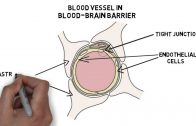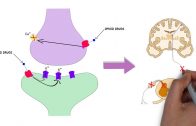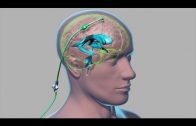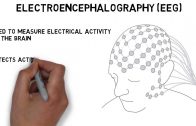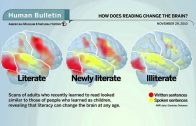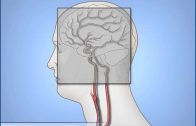2-Minute Neuroscience: Blood-Brain Barrier
In this video, I discuss the blood-brain barrier, a complex that surrounds most of the blood vessels in the brain and protects the brain from potentially dangerous substances that might be circulating in the blood stream. I discuss the tight junctions of endothelial cells as one of the main structural components of the blood-brain barrier, as well as describe the contribution of astrocytic end-feet to the formation and maintenance of the blood-brain barrier. Finally, I discuss the circumventricular organs as structures in the brain that lack a blood-brain barrier.
TRANSCRIPT:
Welcome to 2 minute neuroscience, where I simplistically explain neuroscience topics in 2 minutes or less. In this installment I will discuss the blood-brain barrier.
The blood-brain barrier is a complex that surrounds most of the blood vessels in the brain. It acts as a barrier between the bloodstream and the extracellular space of the brain, allowing only certain substances like water, oxygen, and small lipid-soluble substances to easily cross from the blood into the brain. This prevents toxins, pathogens, and other potentially dangerous substances from crossing from the circulatory system into the brain.
It is thought that the central components of the structure of the blood-brain barrier are the tight junctions of endothelial cells, the cells that make up the interior surface of blood vessels. In other blood vessels throughout the body, there are small spaces between these endothelial cells; small blood-borne substances can pass through these spaces and into surrounding tissues.
The endothelial cells that make up the blood-brain barrier, however, are fused tightly together to form tight junctions that restrict diffusion across the blood vessel lining. Glial cells called astrocytes also have projections called astrocytic end-feet that extend to the walls of blood vessels that are part of the blood-brain barrier. Astrocytic end-feet often completely surround blood vessels in the brain and are thought to play critical roles in the formation of the blood-brain barrier. For example, they seem to be involved with signaling that prompts endothelial cells to form the tight junctions necessary to create the blood-brain barrier and they are believed to have multiple functions involving the maintenance and regulation of the blood-brain barrier.
The blood-brain barrier protects most of the blood vessels in the brain, but there are some areas that lack a blood-brain barrier, allowing substances to pass from the circulatory system to the brain and back. For example, the circumventricular organs are a group of structures lacking a blood-brain barrier that are centered around the ventricles of the brain. These structures are thought to be lacking a blood-brain barrier because their functions require access to the bloodstream. The posterior pituitary gland, for example, has to be able to release hormones directly into the bloodstream.
REFERENCE:
Ballabh P, Braun A, & Nedergaard M (2004). The blood-brain barrier: an overview: structure, regulation, and clinical implications. Neurobiology of disease, 16 (1), 1-13 PMID: 15207256
